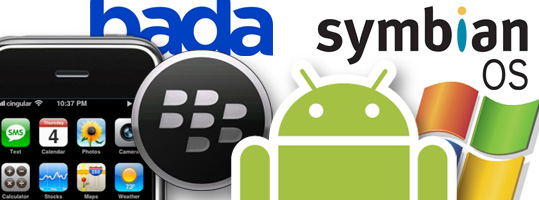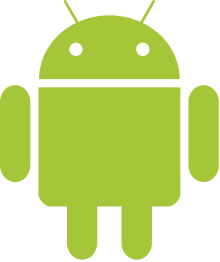
An operating system (OS) is software, consisting of programs and data, that runs on computers manages computer hardware resources and provides common services for execution of variousapplication software. Like computer operating system a mobile operating system is a software platform on top of which other programs run. When you purchase a mobile device, the manufacturer will have chosen the operating system for that specific device. The operating system is responsible for determining the functions and features available on your device, such as thumb wheel, keyboards,WAP, e-mail,text messaging and more. Some of the more common and well-known Mobile operating systems include the following:
Symbian OS
Symbian OS has become a standard operating system for smartphones, and is licensed by more than 85 percent of the world’s handset manufacturers. The Symbian OS is designed for the specific requirements of 2.5G and 3G mobile phones.
Symbian features pre-emptive multitasking and memory protection, like other operating systems (especially those created for use on desktop computers). EPOC’s approach to multitasking was inspired by VMS and is based on asynchronous server-based events.
Symbian OS was created with three systems design principles in mind:
- the integrity and security of user data is paramount
- user time must not be wasted
- all resources are scarce
WINDOWS MOBILE
The Windows Mobile platform is available on a variety of devices from a variety of wireless operators. You will find Windows Mobile software on Dell, HP, Motorola, Palm and i-mate products. Windows Mobile powered devices are available on GSM or CDMA networks.The current and last version is “Windows Mobile 6.5″. It is based on the Windows CE 5.2 kernel, and features a suite of basic applicationsdeveloped with the Microsoft Windows API. It is designed to be somewhat similar to desktop versions of Windows, feature-wise and aesthetically. Additionally, third-party software development is available for Windows Mobile, and software applications can be purchased via the Windows Market Place for Mobile.PALM OS
Since the introduction of the first Palm Pilot in 1996, the Palm OS platform has provided mobile devices with essential business tools, as well as capability to access the Internet or a central corporate database via a wireless connection. Palm OS Garnet applications are primarily coded in C/C++. Two officially supported compilers exist: a commercial product,Code warrior Development Studio for Palm OS, and an open source tool chain called prc-tools., based on an old version of gcc. CodeWarrior is criticized for being expensive and is no longer being developed, whereas PRC-Tools lacks several of CodeWarrior’s features. A version of PRC-Tools is included in a free Palm OS Developer Suite (PODS).MOBILE LINUX:
The first company to launch phones with Linux as its OS was Motorola in 2003. Linux is seen as a suitable option for higher-end phones with powerful processors and larger amounts of memory. While not originally designed to be portable,Linux is now one of the most widely ported operating system kernels, running on a diverse range of systems from the iPAO (a handheld computer) to the IBM Z/Architecture (a massive mainframe server that can run hundreds to thousands of concurrent Linux instances). Linux runs as the main operating system on IBM’s Blue Gene supercomputers. As of November 2010, Linux is the OS on 91.8% of systems on the Top 500 supercomputers list.Linux has also been ported to various handheld devices such as Tuxphone, Apple’s ipod and i phone .Some operating systems developed for mobile phones use modified versions of the Linux kernel including Google Android, Hp webOs and Nokia Maemo.MXI
MXI is a universal mobile operating system that allows existing full-fledged desktop and mobileapplications written for Windows, Linux, Java, Palm be enabled immediately on mobile devices without any redevelopment. MXI allows for interoperability between various platforms, networks, software and hardware components.Android

Android is a software stack for mobile devices that includes an operating system, middle ware and keyapplications.Google Inc purchased the initial developer of the software, Android Inc., in 2005. Android’s mobile operating system is based on the Linux Kernel. Google and other members of the Open Handset Alliance collaborated on Android’s development and release. The Android Open Source Project (AOSP) is tasked with the maintenance and further development of Android. The Android operating system is the world’s best-selling Smartphone platform.
In May 2011, researchers at University of Ulm publicized a security flaw, present in all Android devicesrunning AndroidOS 2.3.3 and earlier versions (more than 99% of all Android devices worldwide), that affects all Google services using the ClientLogin authentication protocol (such as authentication tokens widely used by eBAY and other online services) and allows hackers access any personal data available through Android’s application programming interfaces (APIs), thus stealing the user’s digital credentials over open wireless networks. In response, Google announced a fix that would be rolled out transparently to the use.
 Blog RSS Feed
Blog RSS Feed Via E-mail
Via E-mail Twitter
Twitter Facebook
Facebook


0 komentar:
Posting Komentar